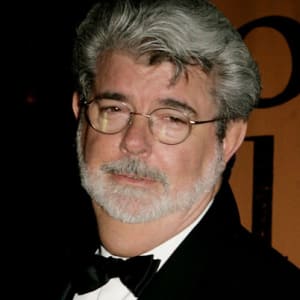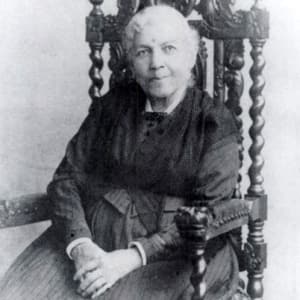
George Lucas
George Lucas is a writer, producer and director known for his creation of the enormously successful ‘Star Wars’ and ‘Indiana Jones’ film franchises.
Who Is George Lucas?
Director George Lucas was born on May 14, 1944, in Modesto, California. He grew up in the suburbs, which inspired his 1973 film American Graffiti. He studied cinematography at the University of Southern California and caught the eye of Francis Ford Coppola, who helped him enter the film business. Lucas is best known for writing and directing Star Wars and creating the Indiana Jones series, as well as founding the Industrial Light & Magic special effects company.
Movies
'American Graffiti'
Although intimidated by the failure of his first film, THX 1138, Lucas went back to work on his next project, American Graffiti. Released in 1973, the film featured such burgeoning young talents as Ron Howard, Richard Dreyfuss and Harrison Ford, and was recognized as a stunning portrait of listless American youth in 1962 depicting, in Lucas's own words, "a warm, secure, uninvolved life." The film, made for only $780,000, grossed more than $100 million domestically. It earned five Academy Award nominations, including Best Picture, Best Screenplay and Best Director for Lucas, and is still considered one of the most successful low budget features ever made.
'Star Wars'
Now that Lucas had won back the confidence of his supporters, he set out to make a children's Saturday morning serial that would be part fairy tale, part Flash Gordon and complete fantasy and adventure set in the imaginary frontier of outer space. The project eventually evolved into a full-length feature entitled Star Wars. Released in May 1977, Star Wars blew audiences away with its awe-inspiring special effects, fantastical landscapes, captivating characters (the erroneous pairing of two bumbling droids providing, ironically, the most heart and comic relief) and the familiar resonance of popular myth and fairy tale. Made for $11 million, the film grossed over $513 million worldwide during its original release.
Lucas continued the story of the Jedi Knights and the Dark Side in The Empire Strikes Back (1980) and The Return of the Jedi (1983). In the meantime, he set up a state-of-the-art special effects company, Industrial Light & Magic (ILM), as well as a sound studio, Skywalker Sound, and began to execute more and more control over the finished product of his films. He eventually built his own moviemaking "empire" outside of the controlling influence of Hollywood in the hills of Marin Country, California.
'Indiana Jones'
Overlapping with his work on Star Wars, Lucas developed a new adventure series featuring a tough but humorous archaeologist named Indiana Jones. He cast Star Wars antihero Harrison Ford in the title role, and Steven Spielberg signed on as director for Raiders of the Lost Ark (1981). Instead of deep space, Lucas mined the past for this box office hit, in which Indiana Jones battles the Nazis over the Ark of the Covenant.
Lucas helped create the stories and worked as a producer on the two sequels that followed. Ford starred with Kate Capshaw (Spielberg's future wife) in Indiana Jones and the Temple of Doom (1984), and in Indiana Jones and the Last Crusade (1989), audiences got to meet the hero's father, played by Sean Connery. After the third Indiana Jones film, however, Lucas prepared to return to the film franchise that made him world famous — Star Wars.
'Star Wars' Prequels
Finally, technology was catching up with Lucas's creative vision for his famous science-fiction saga. He had seen ILM's capabilities when it was commissioned to bring the dinosaurs of Jurassic Park (1993) to horrifying life. The progressions in technology convinced Lucas that it was time to go back to Star Wars.
Lucas embarked on the development of three new prequels — beginning with the menacing Darth Vader as an innocent, gifted young boy. The first in the series, Star Wars: Episode I — The Phantom Menace, was released in the spring of 1999 to high expectations and unprecedented hype and fanfare. The response to the film was mixed. Some critics and Star Wars fans found the characters childish and racially stereotyped. Others complained that the story lacked dramatic depth. No one, however, could argue about the magical quality of Lucas' technologically masterful creations.
Defending his latest creation, Lucas argued that The Phantom Menace was a children's movie, as all the Star Wars movies were meant to be before their cult-like magnetism took hold of the American public. However, a behind-the-scenes featurette that accompanied the film's release to DVD in 2001 told a different story, revealing a director who wasn't entirely satisfied with his product. "It's a little disjointed," Lucas says at one point, after watching a rough cut of the film. "It's bold in terms of jerking people around. I may have gone too far in a few places."
The second installment, Episode II—Attack of the Clones, premiered on May 12, 2002, at the Tribeca Film Festival. The third and final episode, Revenge of the Sith, debuted in May 2005.
Life After 'Star Wars'
In 2008 Lucas released the latest installment of his Indiana Jones series. He served as one of its writers and as a producer while Steven Spielberg once again acted as director. Harrison Ford returned as the famed adventuring archaeologist in Indiana Jones and the Kingdom of the Crystal Skull, and was joined by Cate Blanchett and Shia LaBeouf on this new challenge. The film proved one of the summer's biggest hits.
'Red Tails'
Lucas served as the producer of a different type of action film in early 2012. Working for years, he was able to help bring the story of the famed African-American pilots known as the Tuskegee Airmen to the big screen in Red Tails. This World War II drama starred Cuba Gooding Jr., Terrace Howard, Nate Parker and David Oyelowo.
Red Tails may prove to be one of Lucas's final epics, excluding a possible new Indiana Jones film. He announced that he was retiring from big blockbusters to explore smaller, more personal stories on the screen around this time. To that end, Lucas decided to sell his company, Lucasfilm, to the Walt Disney Company in October 2012. He received about 40 million shares of Disney stock as part of the deal. In return, Disney got the rights to the very lucrative Star Wars franchise, which the company continued with the release of the record-breaking Star Wars: The Force Awakens in December 2015.
The following year, Lucasfilm produced the first in its anthology series: Rogue One: A Star Wars Story, which starred Felicity Jones, Ben Mendelsohn and Diego Luna. In 2017, Lucas' friend and old collaborator, Ron Howard, was tapped to direct the subsequent film, Solo: A Star Wars Story, which premiered in May 2018.
Net Worth
Lucas has a net worth estimated at $5.5 billion as of 2017, according to Forbes.
Wife and Kids
In addition to being a filmmaker, Lucas has been dedicated to helping improve education through the George Lucas Educational Foundation. Created in the early 1990s, the organization encourages the use of project-based and team-based learning, among other education reforms. The foundation's mission is deeply personal to Lucas, who spent many years as a single father to his adopted daughter Amanda after his divorce from film editor Marcia (Griffin) Lucas in 1983. Following their split, Lucas also adopted two more children, Katie and Jett.
In January 2013, Lucas announced his engagement to Mellody Hobson, president of Ariel Investments. The couple had been dating for five years prior to their engagement. The 69-year-old Lucas and 44-year-old Hobson wed in late June 2013 at Skywalker Ranch in Marin County, California. Shortly afterward, they welcomed daughter Everest to the family.
Early Life
Famed director, writer and producer George Lucas was born George Walton Lucas Jr. on May 14, 1944, in Modesto, California. Lucas's parents sold retail office supplies and owned a walnut ranch in California. His experiences growing up in the sleepy suburb of Modesto and his early passion for cars and motor racing would eventually serve as inspiration for his Oscar-nominated low-budget phenomenon, American Graffiti (1973).
Before young Lucas became obsessed with the movie camera, he wanted to be a race car driver, but a near fatal accident in his souped-up Fiat just days before his high school graduation quickly changed his mind. Instead, he attended community college and developed a passion for cinematography and camera tricks. Following the advice of a friend, he transferred to the University of Southern California filmmaking school. There, he produced a short futuristic sci-fi film called Electronic Labyrinth: THX 1138 4EB, and garnered a comfortable spot under the wing of Francis Ford Coppola, who took an active interest in unleashing new filmmaking talent. Coppola convinced Warner Brothers to make a feature length version of the film, and although a few critics recognized some philosophical depth behind all the technical wizardry, THX 1138 (re-titled) flopped terribly in its 1971 release.




